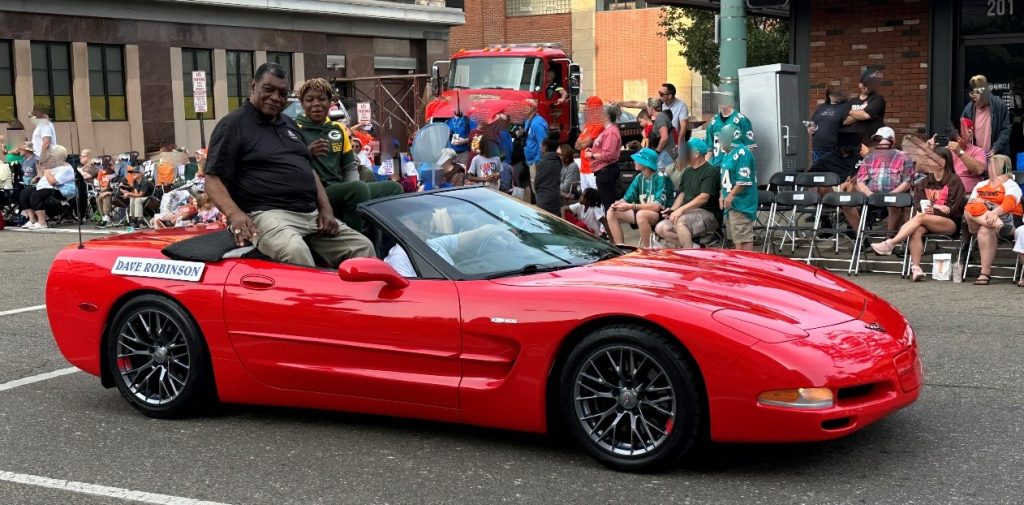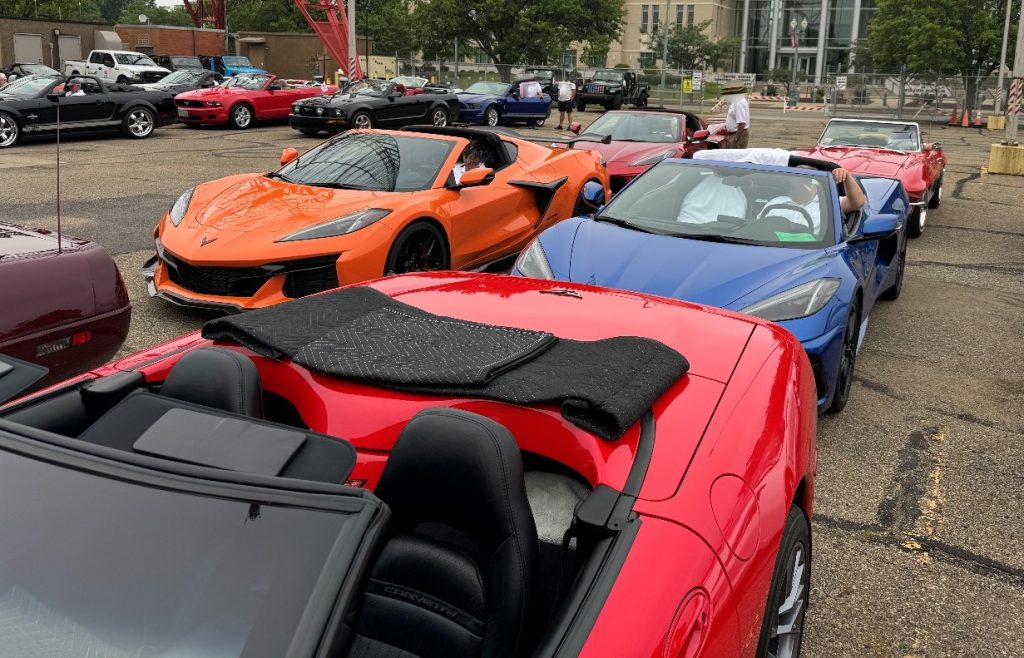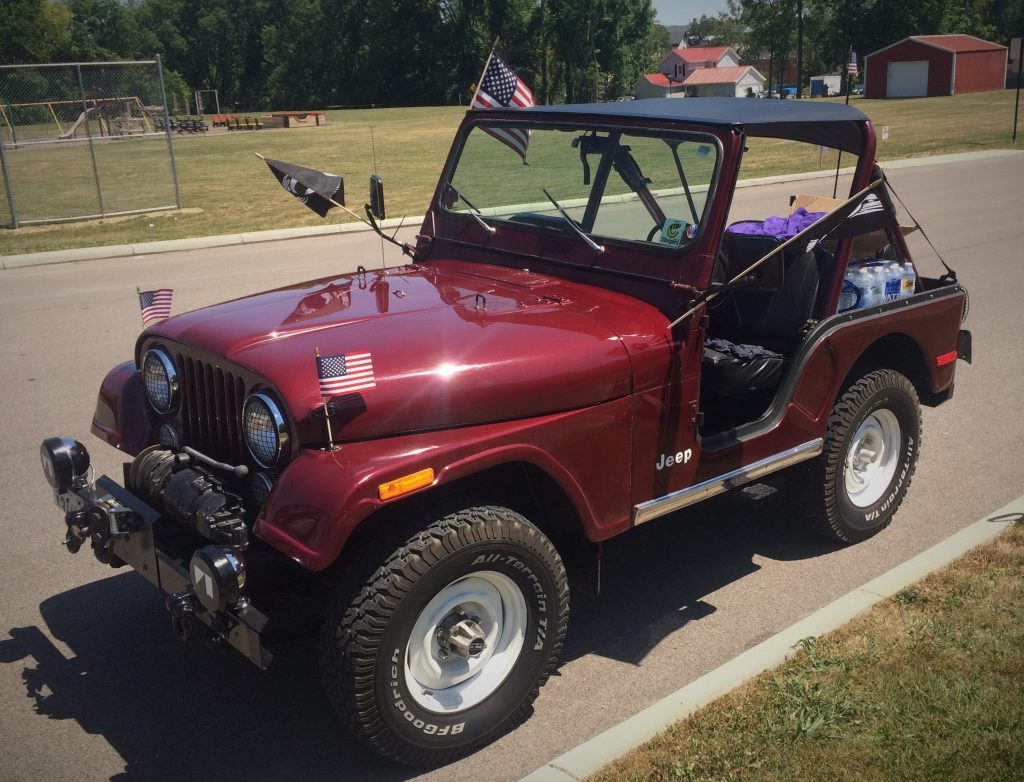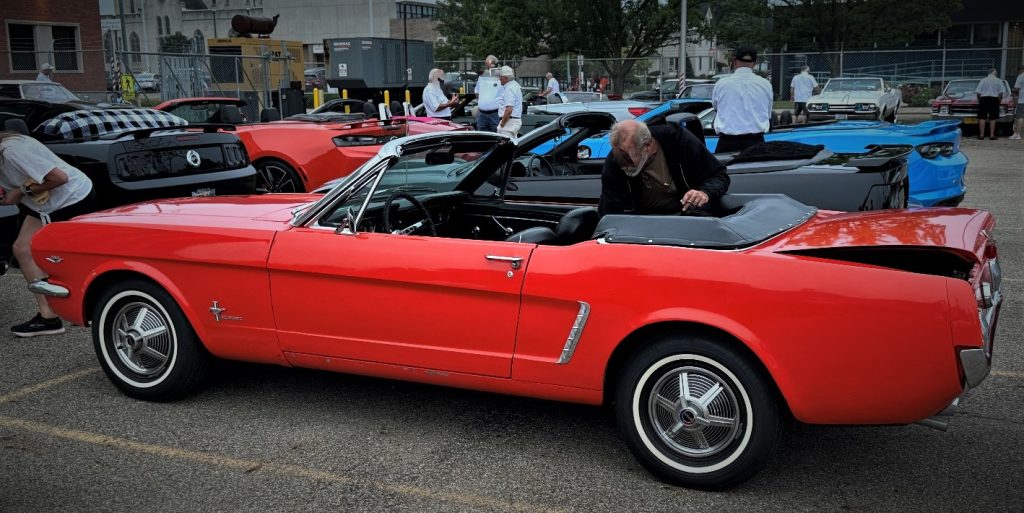No doubt about it—if you own a vintage car, truck, or Jeep, there’s a good chance someone’s going to eventually ask you to drive it in a parade.
And it seems to be happening much more often these days simply because, in years past, convertibles were far more prevalent. Heck, there was a time when dealerships loved loaning new cars to organizations solely for parade duty.
Today, not so much.
The collector vehicle folks are stepping up to the plate though, gleefully transporting Homecoming Queens, military veterans, and all sorts of VIPs down parade routes across the country.
For the last couple of years, I have participated in the Pro Football Hall of Fame Parade in Canton, Ohio—in early August when humidity and heat can be aggravatingly high. Before the event I always take some key steps to make sure my car doesn’t suffer an embarrassing breakdown during a popular televised parade.
With that in mind, here are some good tips to prepare your vehicle for parade duty. Some involve the vehicle, some don’t. But they’ll all come in handy—especially if you’ve got a 250+ pound former NFL linebacker sitting on your convertible boot.

Cooling System
You’ll be idling a lot—so inspecting your cooling system for low RPM efficiency is critical.
Make sure that your radiator and overflow tank are full, and the caps secure snugly. If you’ve got an older radiator, check for any corrosion or damage. Check all coolant hoses for condition, ensuring they are not soft, cracked, or bloated. Obviously you’ll want to fix any leaks before they become an issue for the marching band behind you.
Then, confirm that the radiator fins are clear of debris. Many cars today, especially Corvettes, use “bottom feeding” radiators, where grass and leaves can collect on the radiator and hinder heat transfer. Hose it out and flush it backwards with a light stream of water and/or gentle compressed air—just be careful not to blast high pressure water or air into your radiator, as it could damage the delicate fins.
Double check that your cooling fans are working properly too. Test the thermostat triggers for electric fans and, for mechanical engine-driven fans, a proper fan shroud will maximize the fans’ efficiency
Having plenty of low speed airflow is the name of the game here.
We’ve got some other cooling system articles that can help:
Transmission
It goes without saying that you’ll be on and off the gas a lot as the parade meanders down its route—which can take a toll on your transmission if it’s not in good working order.
Running a high lift cam or high stall converter with an automatic transmission? Make sure you have proper cooling for the slow ride. Converters can generate plenty of heat, and it’s often a smart idea to improve your cooling capability with an external tranmission fluid cooler.
Honestly though, if you have excessive cam lift or a high stall you may not want to participate in parade at all—race cars and hot street cars are not made to continually stop and go, or idle for long periods.
If you have a manual transmission with a hydraulic clutch, make sure the master cylinder reservoir is full and there’s no air in the system. Here’s a handy tutorial on how to bleed a hydraulic clutch. Also, make sure the return spring will pull the pedal up.
For a mechanical clutch, check that it’s adjusted properly and everything’s lubricated well. The last thing you want is a stubborn bell crank when a dozen parade floats are bearing down on you.
Also, don’t ride the clutch and allow it to slip as you head down the parade. Put the pedal all the way down or up with positive engagement—unless you enjoy replacing clutch discs.

Brakes
Yup, you’ll be riding your brakes a lot. If you have an automatic transmission, you will be holding the car back with the brakes for several miles. As for manual transmissions, you will have to slow and stop often too.
So if it’s been a while since you bled-in fresh brake fluid, now’s the time. Remember, brake fluid is hygroscopic, so it’ll suck up moisture from the air even as the car is resting in your garage. Not only will that result in a spongy pedal, it could rust brake parts from the inside-out.
Same deal with your pads, rotors, drums, and shoes. If you haven’t taken a close look at your braking system recently, do it before you head to the line. Look for uneven wear patterns, excessive dust, or any unusual noise. This article will help: How to Diagnose Common Brake Issues
The 4H Club walking ahead of you appreciates the attention to detail here.
Fuel/Tires/Suspension
This may sound like a no brainer, but with all the hubbub and excitement surrounding the parade itself, some people forget to fill their tank with gas. No joke, we’ve seen it happen.
Same with your tires. Many vintage vehicles get pulled out for parade service once a year and, as a result, their tires may have deflated, distorted, or decayed from long term storage. Check your tires the minute you decide to enter a parade—fill them up to the correct PSI, then monitor it closely in the days leading up to the event. This is especially true if you’re carrying extra passengers or, more importantly, hauling a float trailer.
In other words, don’t count on the Grand Marshall to tell you that you’ve got a leak or flat spot.
Regarding the suspension—drive the car around early to listen for odd clunks and noises, then feel for any excessive lean or bounce. If you have an adjustable suspension, it might be smart to raise it an inch or so, to compensate for the additional passenger weight and uneven road surfaces along the parade route.
If you’ve got a slammed, lowered car or are running super low-profile tires, you may want to re-think entering the parade altogether too. Extra passenger weight and the potential for driving across uneven surfaces (grass/gravel staging lots, mounting curbs, etc.) might bottom-out your chassis and damage your wheels.
Seating

In a lot of cases, your VIP will want to sit on the top of the back seat. For Corvettes and some other ragtops, it means they’re seated on the hard boot cover.
I’ve seen folks make a temporary seat using wood and heavy moving blankets, which pads and protects the original seats underneath.
Speaking of the interior—folks unfamiliar with classic cars have a tendency to overlook the delicate nature of decades-old plastic and vinyl. Innocently enough, they will stand on your fragile seats and center console unless you politely tell them otherwise.
As alluded to earlier, I once had a former NFL linebacker in my Corvette. I placed clean(!) moving pads directly on the body to protect the boot cover’s paint. I put some beanbags underneath a hard wood panel on the passenger seat bottom to serve as a step for him. It worked great, and we both had a lot of fun.
If you’ve got a back seat in your ragtop, a larger board and some more moving blankets would work with similar effect—spreading out the weight and protecting the original seats.
Candy & Kids
In all seriousness, there are some precautions to take if you’ve got folks tossing candy from your vehicle. Make sure it is a hard candy—or at least a robust soft candy like a Tootsie-Roll. The last thing you want is melted chocolate on your carpets.
But what’s way, way more important than your interior are the parade’s specators.
If you’ve got handfuls of candy spewing from your vehicle, kids will undoubtedly run up to grab it. BE ALERT! It’s very (very!) easy to get distracted by the excitement of the parade activity, so don’t lose sight of the fact that you’re piloting a 2,500+ pound vehicle.
In a similar vein, I’ve had adults run up to my vehicle to get autographs too—not from me obviously, but from the VIP riding shotgun.
That said, it’s not rude to ask your passenger to alert you to the dynamic parade environment, either. I once had NFL Pro Bowl wide receiver Charlie Joiner in my car, and he was very good at spotting folks as they darted towards us—I guess the guy’s got a ton of experience at that sort of thing.
Other Things to Consider

It’s no secret that parades often take place in the summer months, which means both heat and the sun are factors—especially for convertibles. Make sure you’ve got sunscreen or hats for your passengers, along with plenty of water and a first aid kit.
In addition to hauling VIPs, you may also serve as a support vehicle for your parade group, hauling stuff like extra handouts, saxophone reeds, and shoelaces. Always ask beforehand what the expectations are and confirm that you’re willing/able to accommodate them.
Finally, you might want to explore hand grips and other methods for your passengers to remain safe and secure as they ride on your back decklid. Roll bars on vintage off roaders make easy attachment points, but even a stretched seat belt or short recovery strap tied to a seat bracket can come in handy when bouncing and balancing along the parade route.
Enjoy the Ride!
Though it can be a lot of prep work, I have thoroughly enjoyed all the parades I’ve participated in.
You get to meet some interesting people and the pre-parade marshalling area is more like a car show with plenty of gearhead comraderie—usually with some interesting and rare cars to see.
As you begin to meet people, don’t be surprised if you become a “regular” too. These events tend to become a yearly get together—and a fantastic opportunity to share the gearhead culture with new folks while enjoying this great hobby of ours.
And isn’t that pretty much the whole point of owning a classic car?


Comments